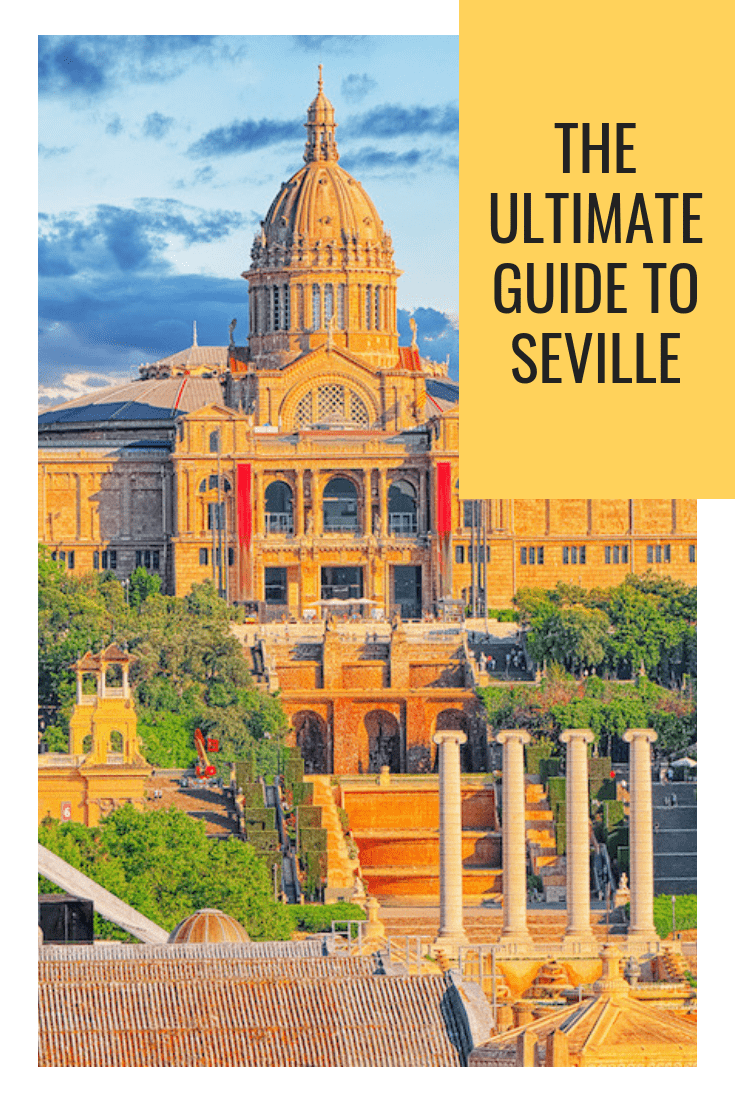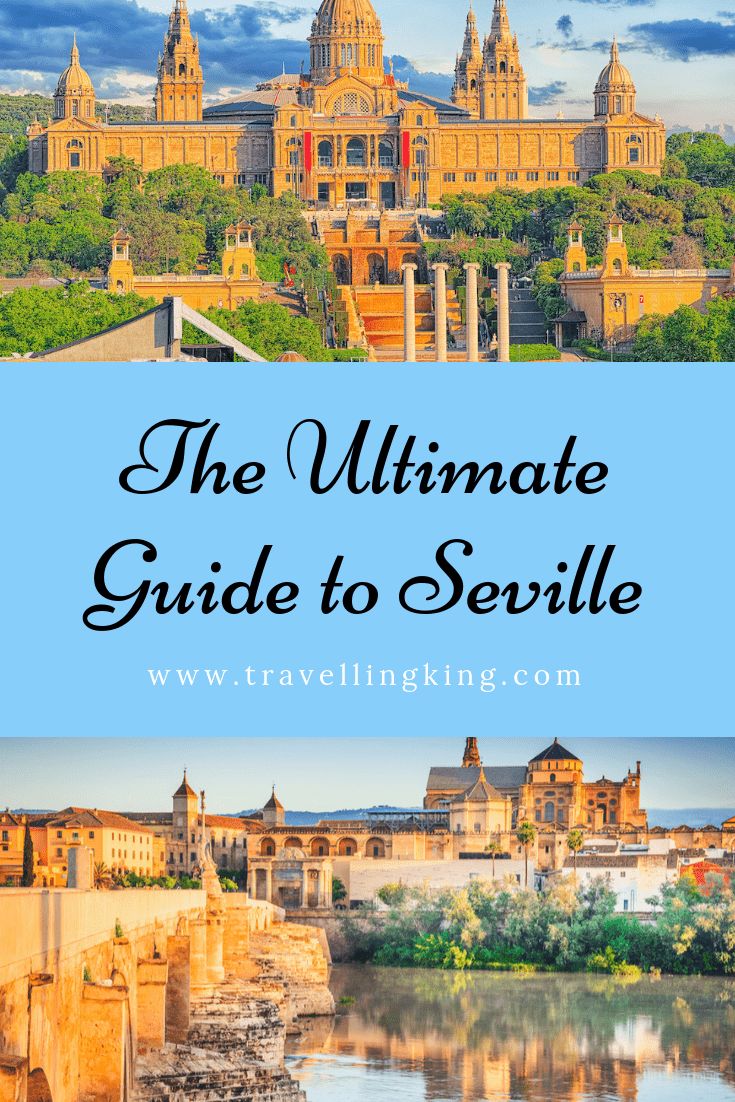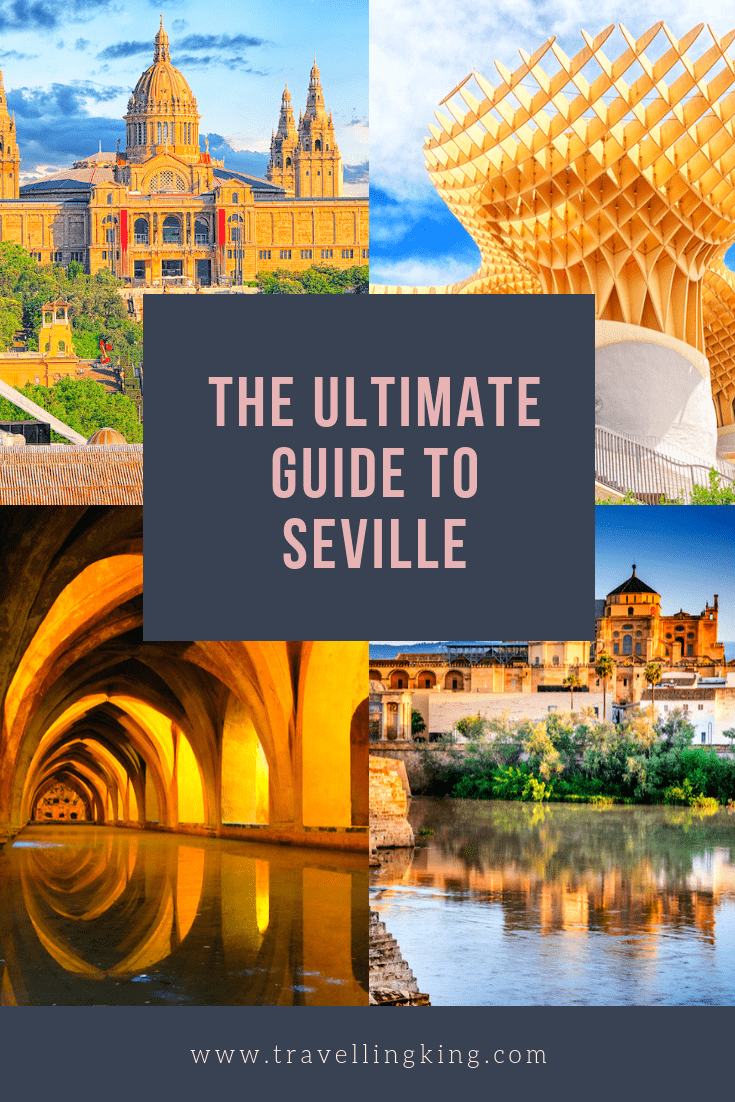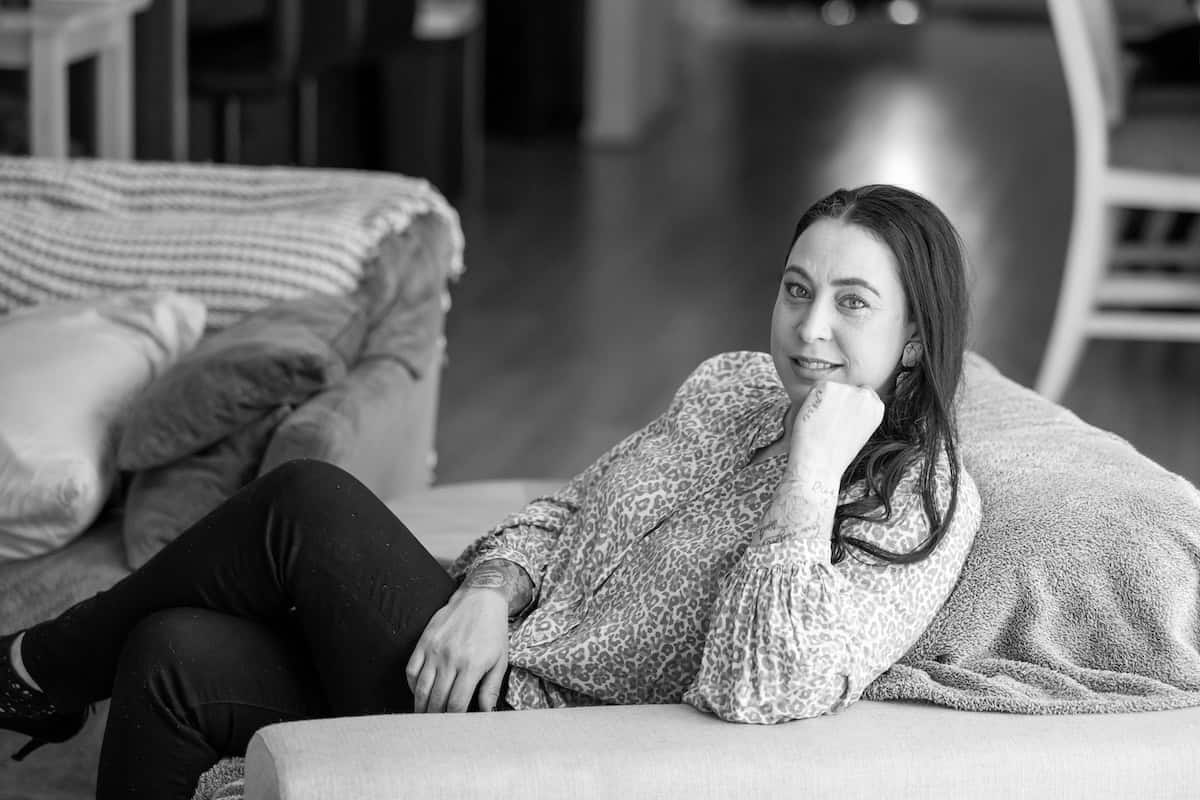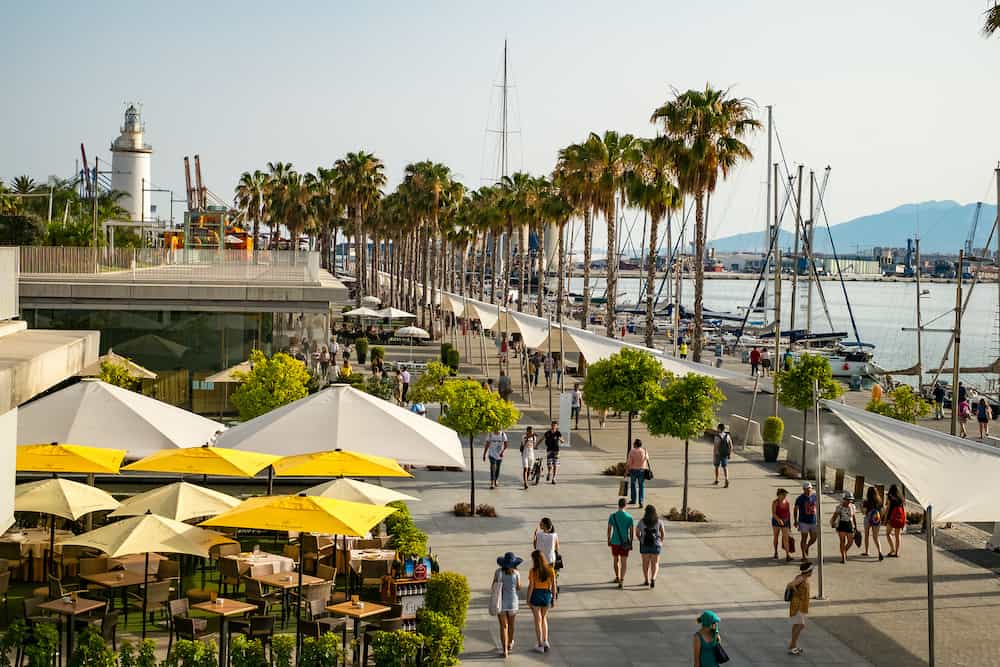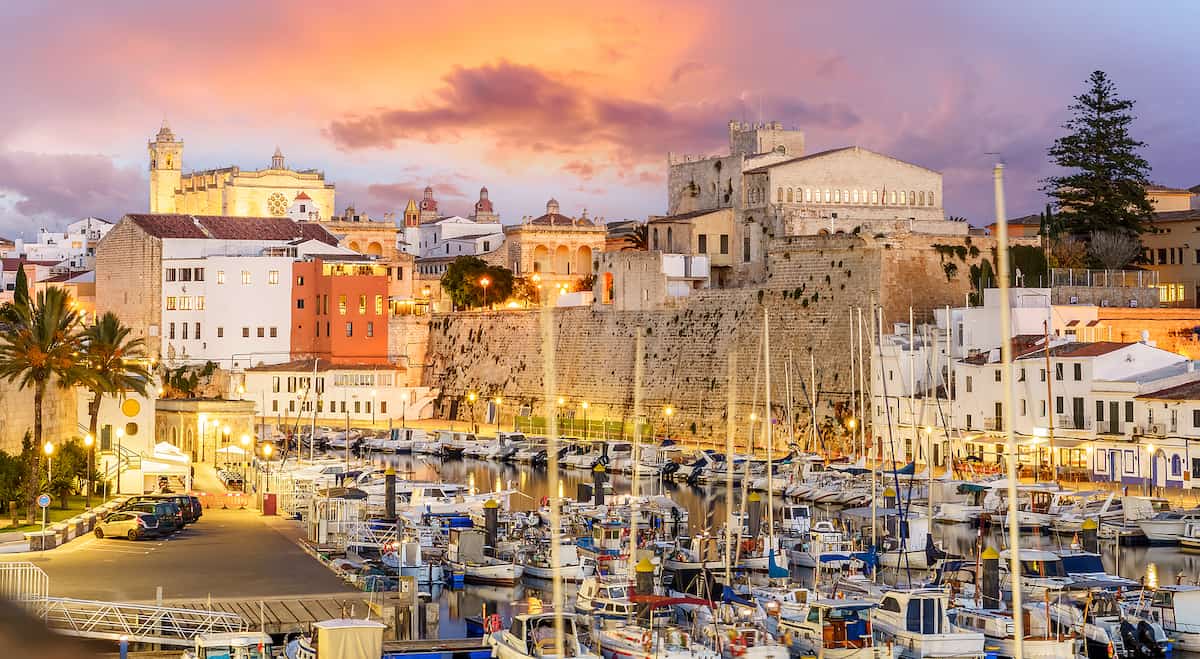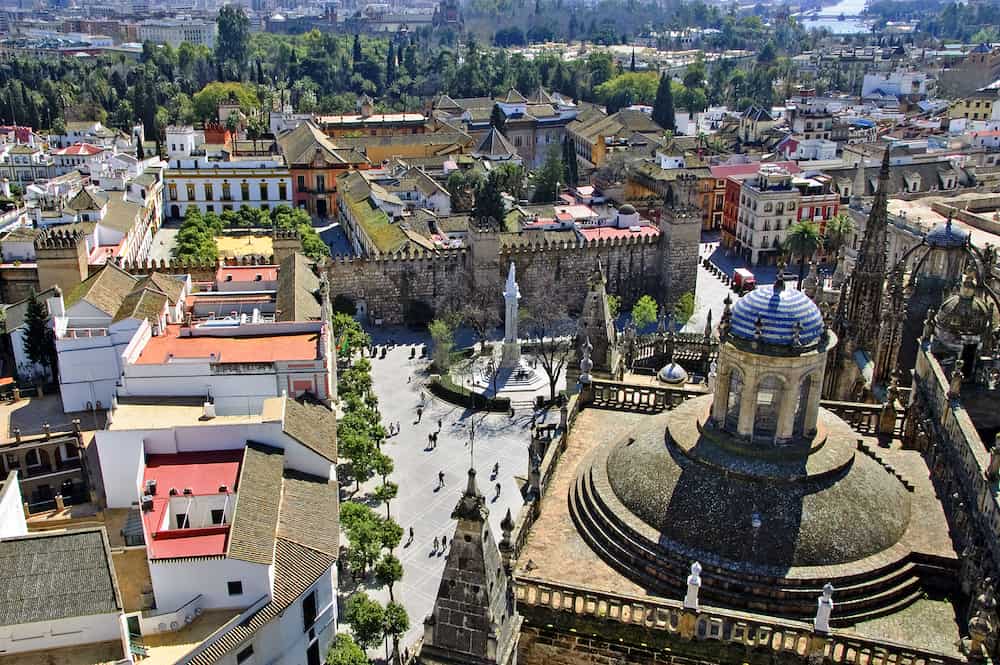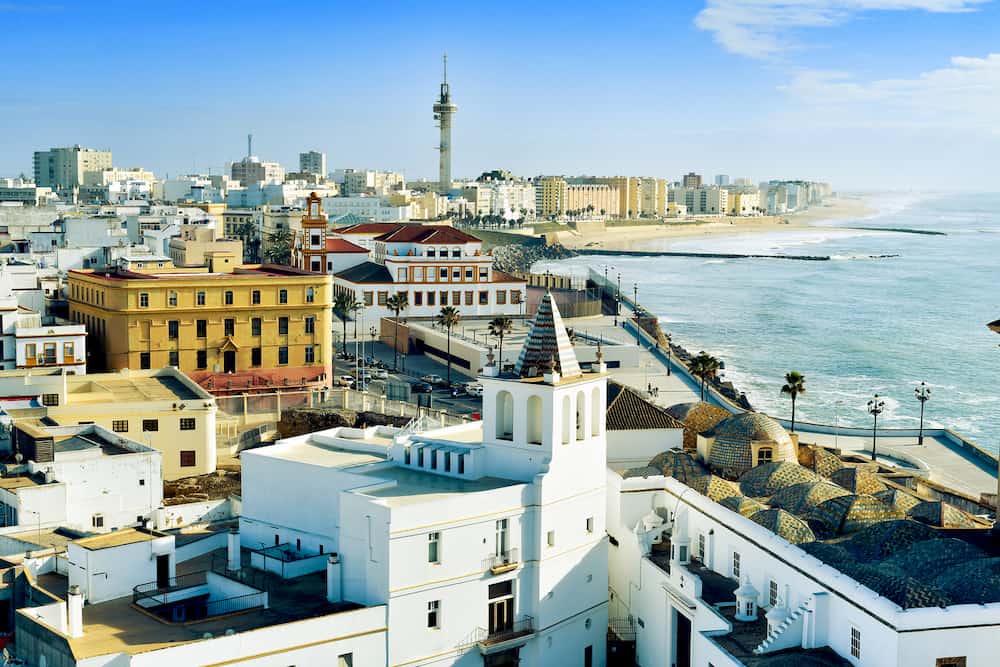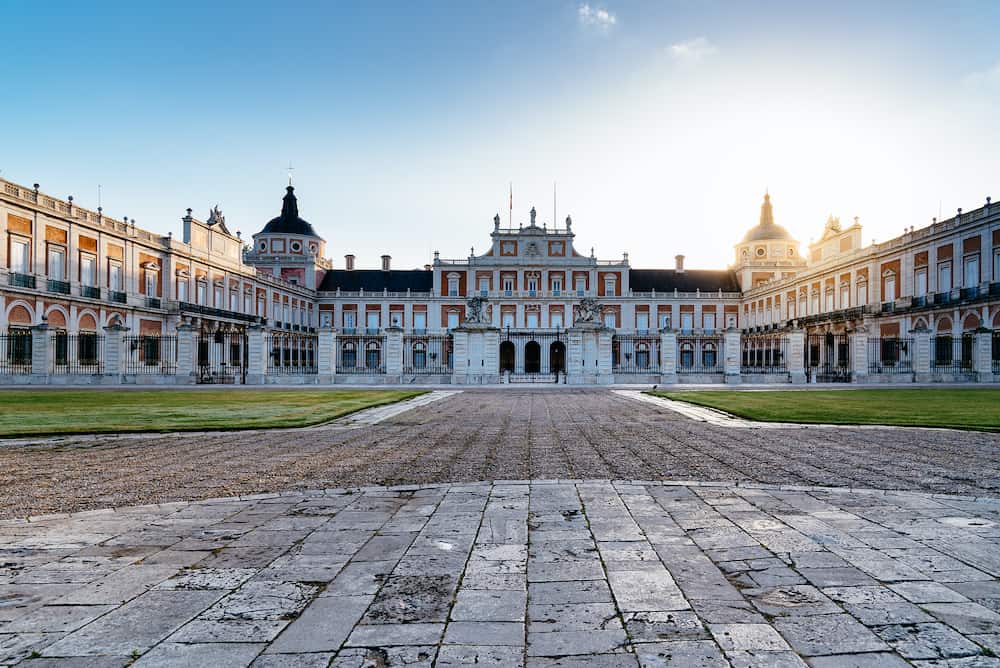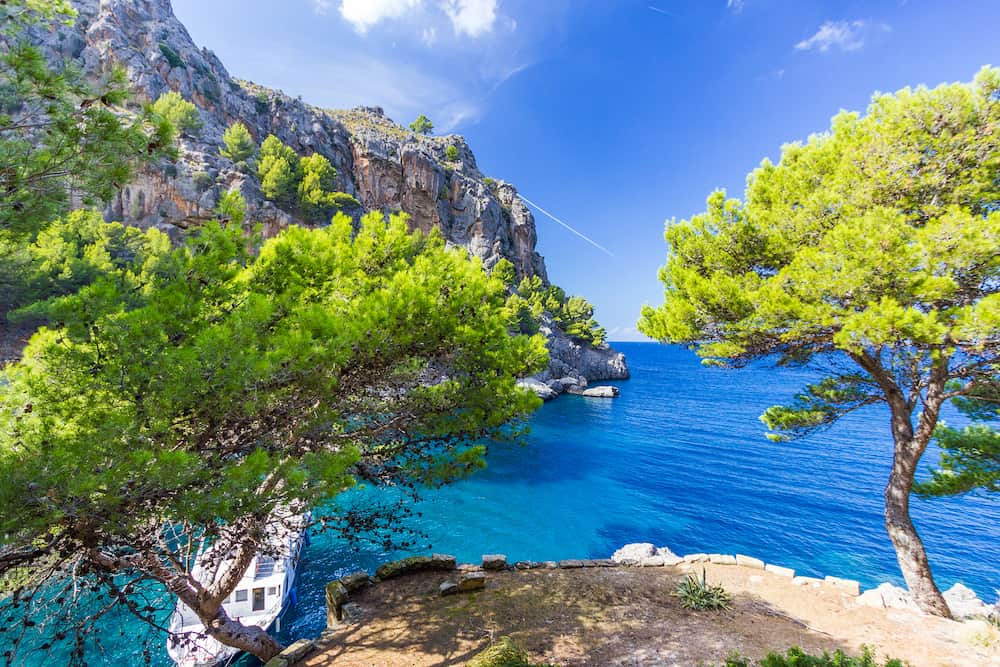The Ultimate Guide to Seville
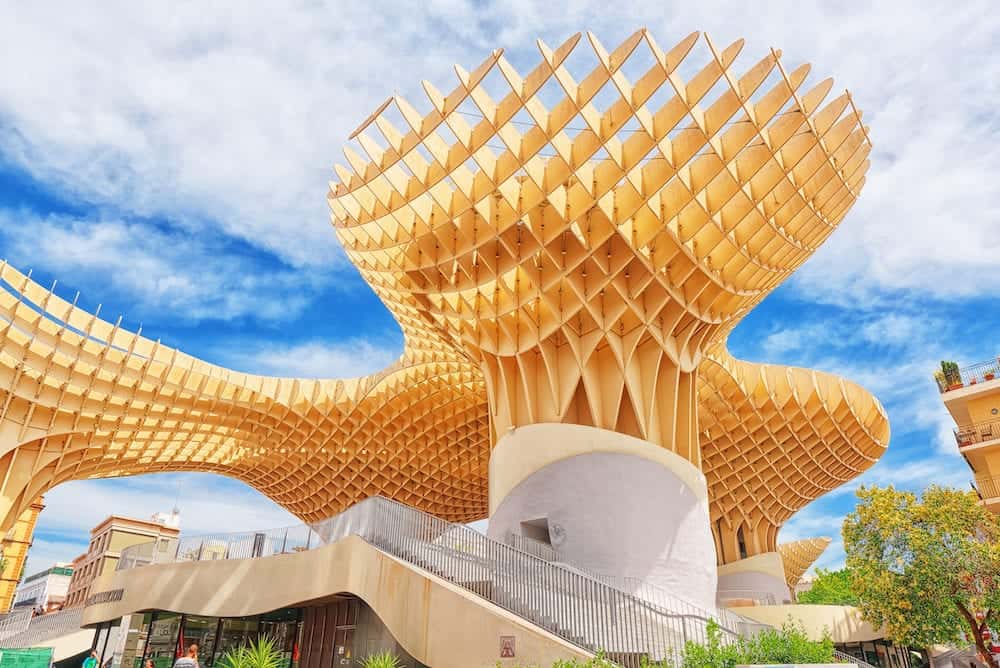
Seville is one of Spain’s most iconic destinations, straddling the Guadalquivir river, this Spanish city is the capital of Andalusia and home to some of UNESCO’s world heritage sites including the Alcazar, or Royal Palace and the impressive cathedral.
Seville is a bustling city, full of tourists all year round and has an energy and vibrancy that you can feel pulsating in the rhythm of the city. Expect cheap eats, busy streets, noisy and authentic Spanish tapas bars, as tapas was invented here.
Seville is what most people envision when they think of Spain: feisty flamenco, hot and sweaty summer nights, buildings with a hint of Moorish architecture and tapas bars aplenty.
To experience the most quintessential essence of Spain we have put together the Ultimate Guide to Seville to show you the best the city has to offer in culture, gastronomy and history!
Plan your trip
Save on fees abroad with the Wise Card—use it at ATMs, restaurants, and for flights or hotels in over 150 countries. Manage 40+ currencies in real-time with the Wise app.
Need Help Planning?
- Cheap Flights: Find the best deals.
- Accommodation: From hostels to luxury stays.
- Car Rental: Affordable options worldwide.
- Sightseeing Tours: Explore without breaking the bank.
- Travel Adapter: One adapter for all your needs.
- Travel Insurance: Don’t risk it—stay covered.
This post includes affiliate links. Read my full disclosure and content policy.
How to get to Seville
Most tourists travel to Spain via the two main hubs, Madrid Barajas Airport and Barcelona Airport. From these two transport hubs you can travel easily to Seville by high-speed AVE trains.
Seville has a main train station called Sevilla Santa Justa where trains run frequently to and from Madrid, approximately 20 times a day. The high-speed AVE train takes only 2 hours and costs around €75.50 one-way but you can save a lot of money by booking in advance on the Renfe website.
You can also travel to Seville from Barcelona; there are two trains daily which take around 5.5 hours. The full price for the train journey is €116.60 but deals can be found by booking in advance on the Renfe website.
Alternatively you can fly into Malaga Airport and take an ALSA bus to Seville. The bus runs once a day direct from the airport to the Plaza de Armas bus station in Seville. Buses are often sold out and should be booked in advance.
There is also a bus running 8 times a day from Maria Zambrano rain station in Malaga, which costs €18.57 – 23.52 and the journey takes approximately two and a half hours to four hours depending on the bus.
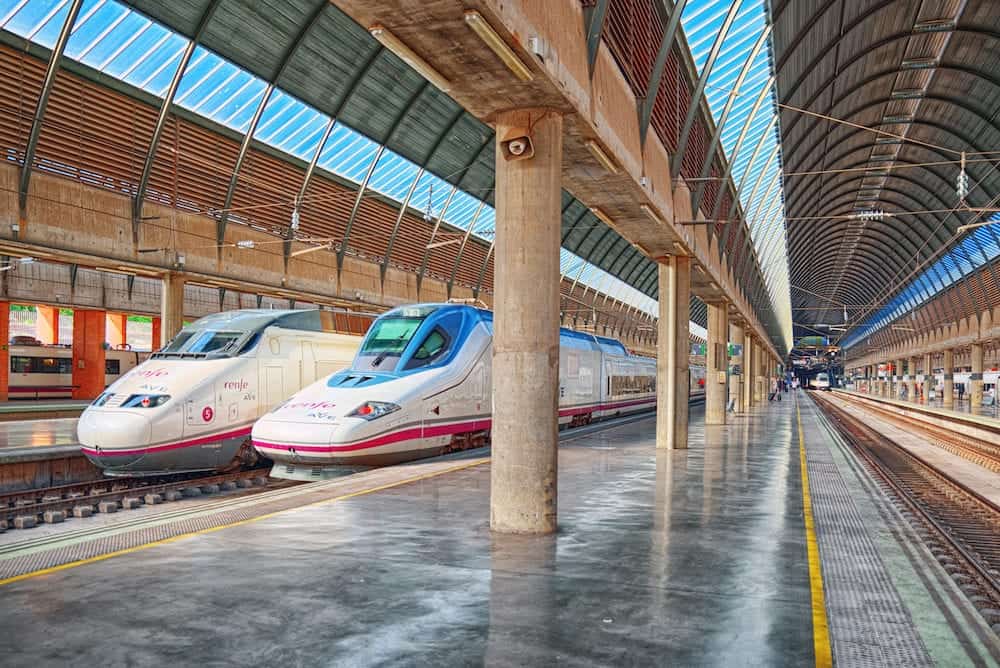
The best time to visit Seville
The best time to visit Seville is in springtime, when the warmth of the sun brings out the smell of the orange blossom flowers that bloom on the tree-lined streets, wafting a warm and fragrant scent of sweet oranges into the air, this period of the year is called “Azahar”.
Many tourists travel there in the summer time but Seville can reach sweltering temperatures that make this the least preferable time to travel.
Summertime is also the most expensive time to visit Seville and you can save around 40% of your hotel costs just by travelling between March and May and September and October.
Seville is packed with tourists almost all year round so it is hard to avoid the crowds as it is also a major tourist destination for Spaniards, also temperatures soar in the summer months and make walking around the city unbearable to skip the summertime to get the best out of the city.
One of the best or worst times to visit Seville is in Semana Santa, or Holy Week in Easter. Seville is renowned for having the largest and most intense celebrations and processions in Spain.
The streets will be crowded with people craning to catch a glimpse of the Pasos, which are giant floats supporting statues of the virgin or representing scenes from The Passion.
Each of these is so hefty that it takes a team of around 40 bearers, known as Costaleros, to carry these floats which weigh around 50 kilos each for the entire eight hour processions.
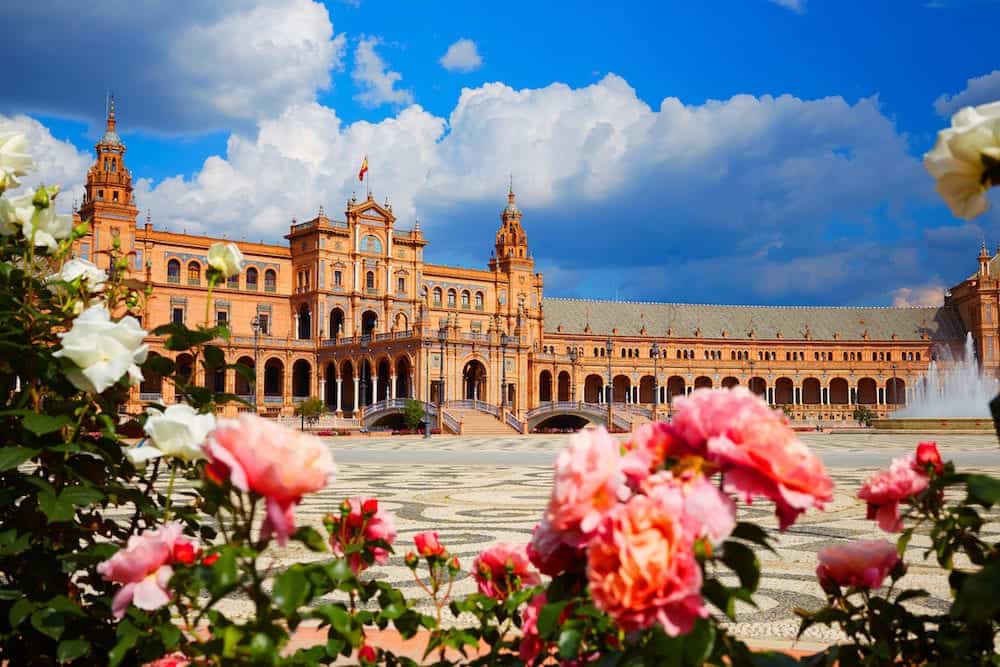
How to get around Sevile
The city is easily traversed on foot but renting a bicycle, there are many bicycle rental places in the city that have prices from 12 euros for four hours to rates for weekly rentals.
There is also the municipal bike rental scheme where you have to register online.
Cycling is one of the easiest ways to get around the city and is relatively safe due to the growth in popularity of bicycles in the centre.
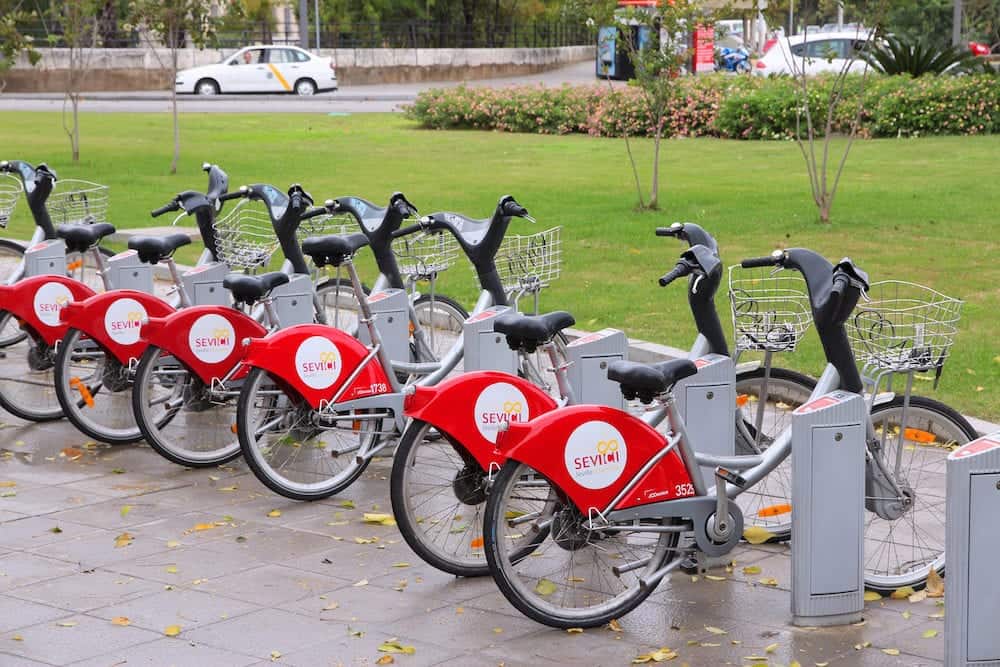
Where to stay in Seville
Hotel Sacristía de Santa Ana – This gorgeous boutique hotel is set in an 18th century mansion and makes the perfect romantic budget getaway. The hotel is located in the Alameda de Hercules, which is the central hotspot full of bars, restaurants and one of the best places to watch the lively buzz of the city both day and night.
Rooms are palatial in décor and have a historic feel, the hotel has a wonderful central Andalusian patio with lots of charm.
Casual Sevilla Don Juan Tenorio – This budget conscious hotel is situated in Santa Cruz plaza, only a few minutes away from Seville’s main historic sites and combines modern quirky décor in a historic style building with rooms looking onto an interior patio.
Casa de Colón – Just two minutes away from the Seville cathedral, this 18th century conversion into a hotel has elements of modern décor combined with traditional architectural features and has plenty of character. Staff are friendly and helpful.
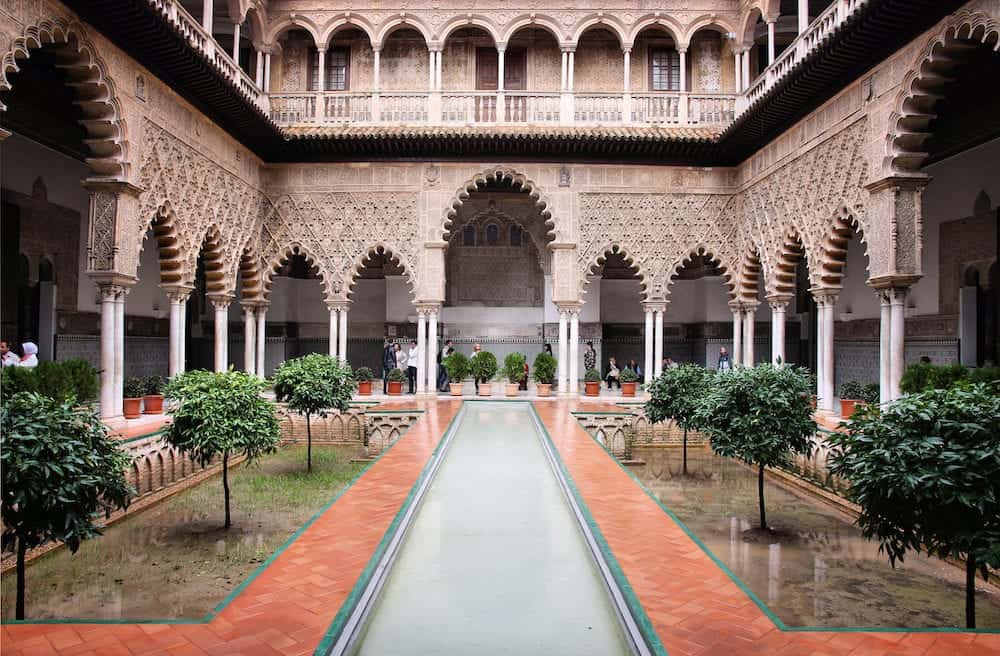
Things to do in Seville
Take in a flamenco show
Flamenco is the essence of Seville embodied in dance. The fiery stomping of flamenco and its rhythmic guitar can be heard all over the city but the best places to take in a flamenco show is Casa de la Memoria.
Calle Cuna 6, where they have a nightly flamenco show. Booking in advance is recommended as this place is tiny and tickets sell out!
Another favourite is Casa del Flamenco, Calle Ximénez de Enciso 28, which is just in the Santa Cruz neighbourhood. Flamenco shows take place in the interior patio and it is the only show in Seville that doesn’t use microphones or any audio amplification.
Book in advance and arrive at least 15 minutes early to make sure you get a good seat!
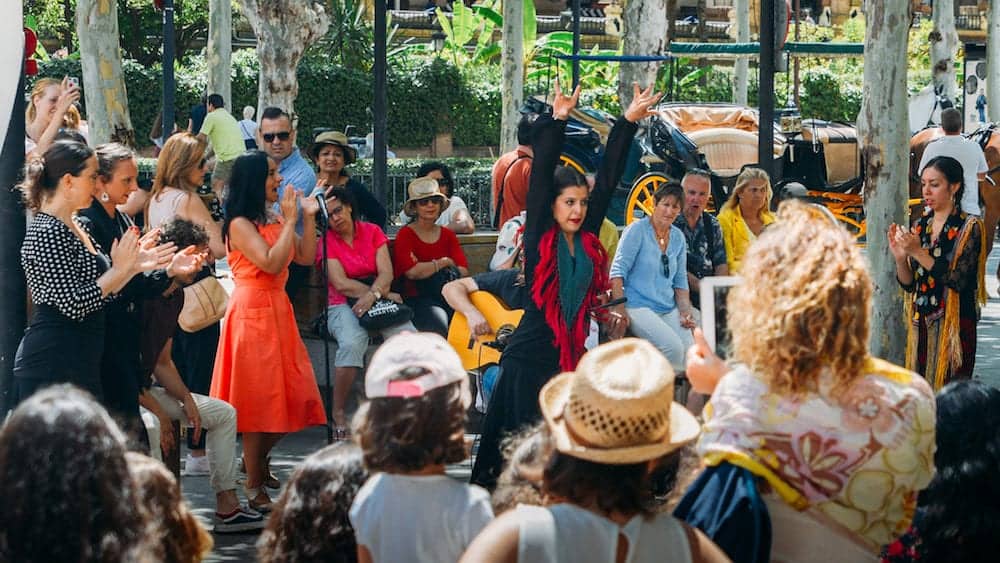
Drink sherry
Thought sherry hails from Jerez de la Frontera, Seville is fond of this tipple and the best place to enjoy a sherry is to visit El Rinconcillo, Calle Gerona 40, which is also Seville’s oldest and most iconic bar, dating back to 1670!
This is the perfect place to enjoy tapas of Jamon with a glass of dry manzanilla.
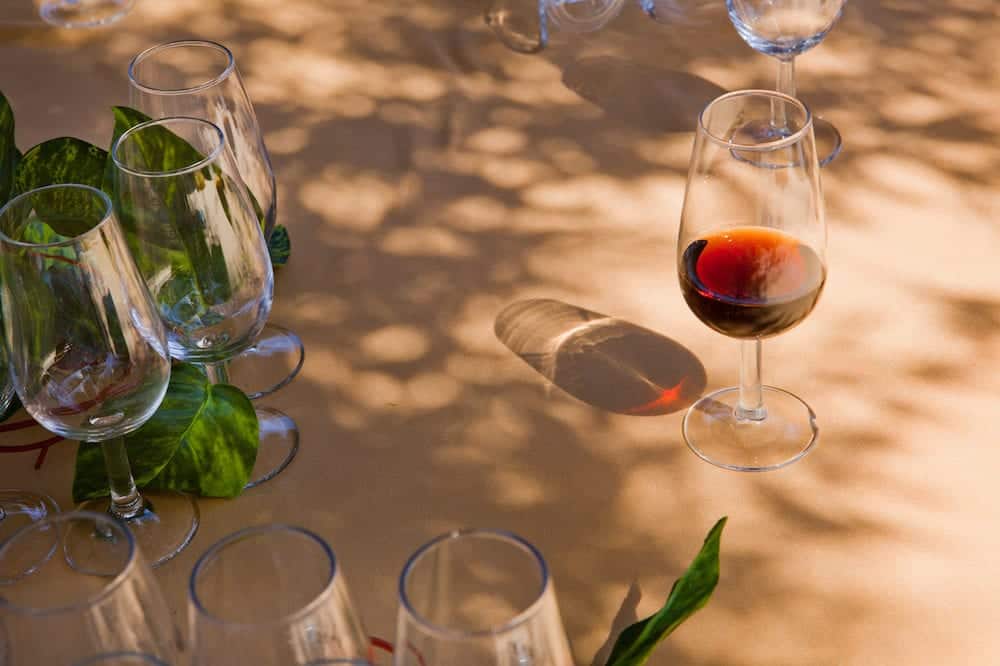
Explore Macarena neighbourhood
One of the hidden gems of Seville is the little-known Macarena neighborhood. This historic part of Seville is off the tourist trail and is a working-class neighbourhood with original charm.
Now it is one of the artistic neighbourhoods of Seville where you can find local bars and craft workshops as well as the beautiful Basilica de la Macarena, a small church which is home to the Macarena Virgin.
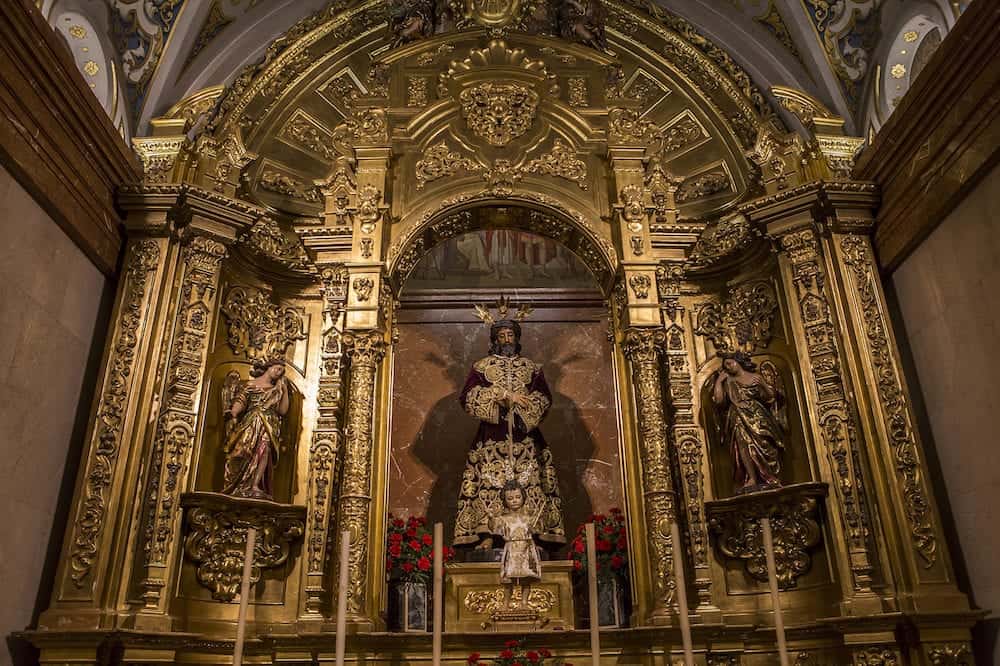
Unwind at a Hammam
The perfect place to end your trip is to unwind at a hammam spa. For the ultimate in relaxation visit Aire, an Arabian style hammam nestled in the winding streets of the city. Just a few steps away from the cathedral you can find this oasis of calm and peace where you can escape the heat of the city.
The hammam has a salt pool where you can float weightless and drift away, mixed temperature pools, a steam room and a pool with water jets. The décor is reminiscent of the Moorish style of the Alcazar and the mellow lighting and gentle music removes all the stresses of the day and transports you to another time.
I love to visit this place at night and the last turn is at 10:00pm, the entrance is normally for around 90 minutes and prices range from 36 euros without a massage.
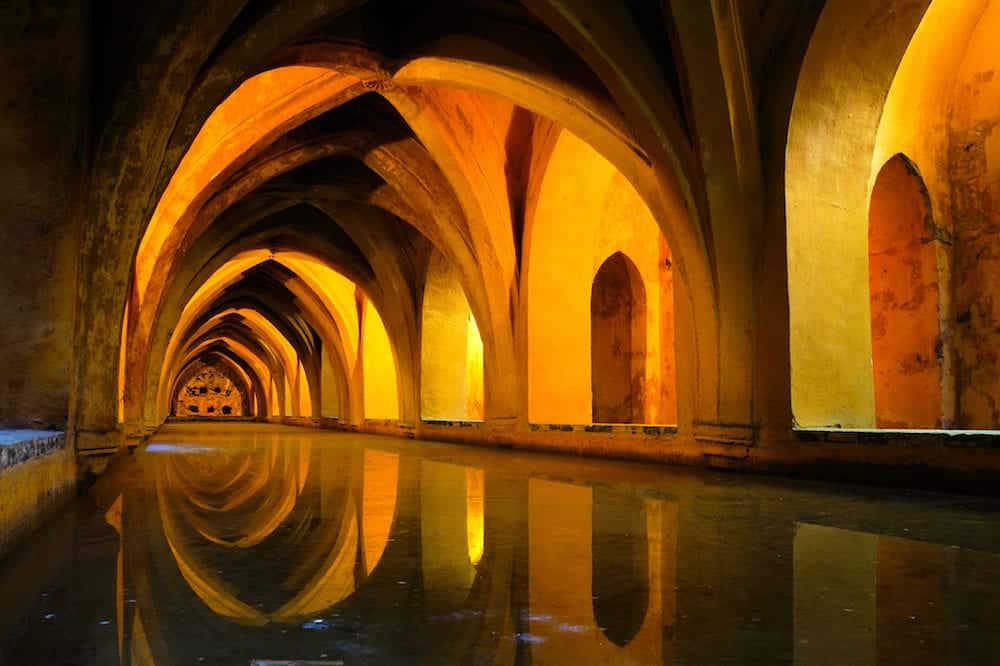
Places to visit in Seville
Alcazar of Seville
A must-see in Seville, along with the Cathedral, these sights are unmissable. The only issue is that both of these places open at 11:00am and the cathedral opens until 13:30pm. I would advise staying two nights to give you the opportunity to visit one of these UNESCO heritage sites on one day and the other on the next.
The original castle was built upon the ruins of a Roman fortress by the first Caliph of Al-Andalus in the year 913. King Al-Moetamid later expanded it into a palace in the 11th Century.
When the Spanish recaptured the palace from the Moors, King Alfonso X of Castile further expanded the palace and further expansions took place through subsequent reigns.
The palace was declared a UNESCO heritage site in 1987 along with the Cathedral. It also became the set for the water gardens in the series The Game of Thrones.
The site is an impressive fusion of Moorish features and Spanish architecture, the intricate geometric engravings and tiles create a harmony of shapes and colours.
Tranquil pools and fountains trickle in the background and the expansive gardens offer a peaceful oasis away from the smells and sounds of the city.
Book online to avoid the queues.
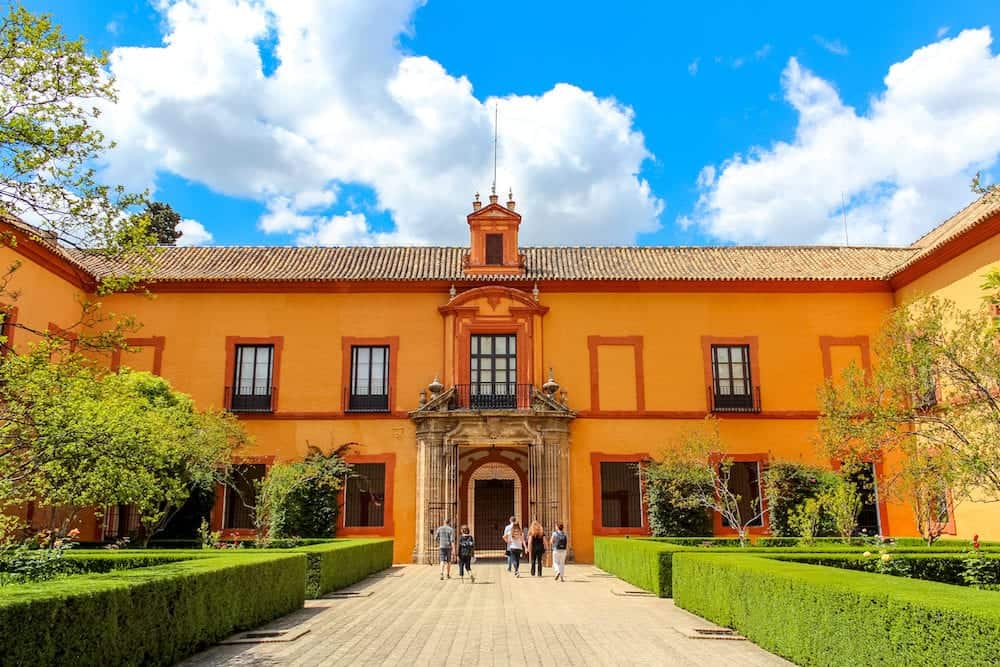
The Cathedral of Seville
This impressive Roman Catholic cathedral was registered as a UNESCO Heritage Site in 1987; in the early 16th century it became the largest cathedral in the world, a title still unsurpassed in present day.
Where the Cathedral stands today was once a grand mosque constructed in 1172, it was completed in 1198. After the conquest by Ferdinand III, the mosque was converted into a cathedral. It later adopted gothic features and the cathedral is breath-taking. Daily visits are organized to the Giralda bell tower where you can have a bird’s eye view of the city.
You can also see Christopher Columbus’ tomb within the Cathedral door, the tomb is held aloft by four figures representing the four kingdoms of Spain during his lifetime: Castille, Aragon, Navara and Leon and was installed in 1899.
His body was laid to rest in 1506 in Valladolid, Spain, which is where he spent his last days, but was moved to Seville under the orders of his surviving brother, Diego.
Christopher Columbus’ tomb was moved again to Santo Domingo, now known as the Dominican Republic where he remained for several centuries. In 1795, Spain lost control of the Dominican Republic and it was moved to Havana, Cuba. 100 years later, his tomb was brought back once again to Seville where it remains in the cathedral.
You can also take in the beauty of the cathedral is from a nearby terrace, sipping sunset drinks at the EME or Dona Maria Hotel is the only way to do it in style!
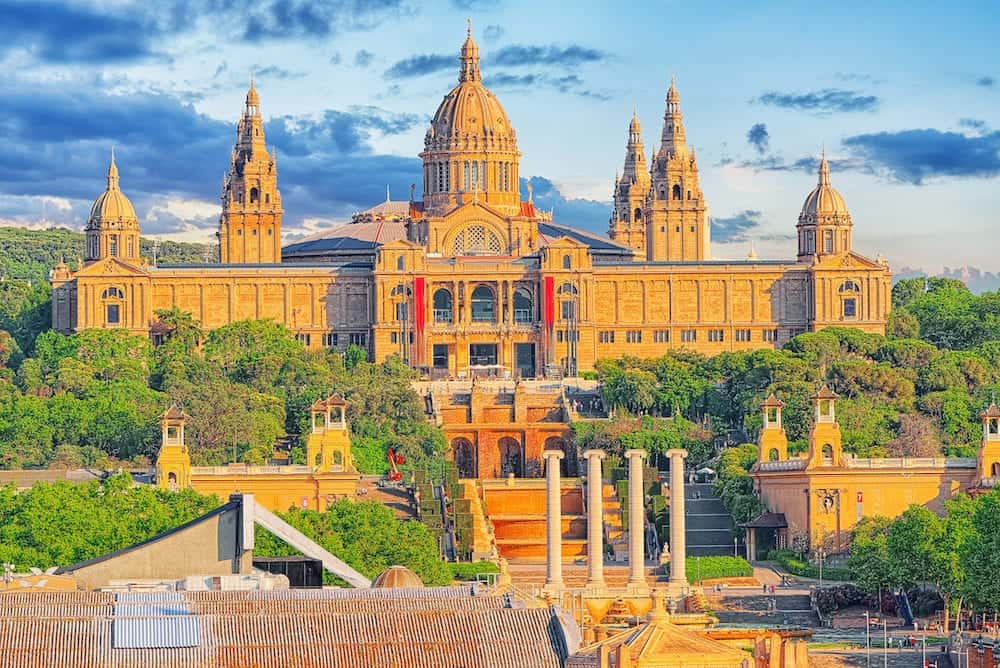
Plaza de España
This plaza of stunning beauty was constructed in 1928 for the Ibero-American Exposition of 1929 blending art deco and hints of the Spanish renaissance revival.
Each of the regions of Spain are represented in tiled alcoves and this beautiful landmark made an appearance in Star Wars – Attack of the Clones as the setting for the city of Theed on the planet Naboo.
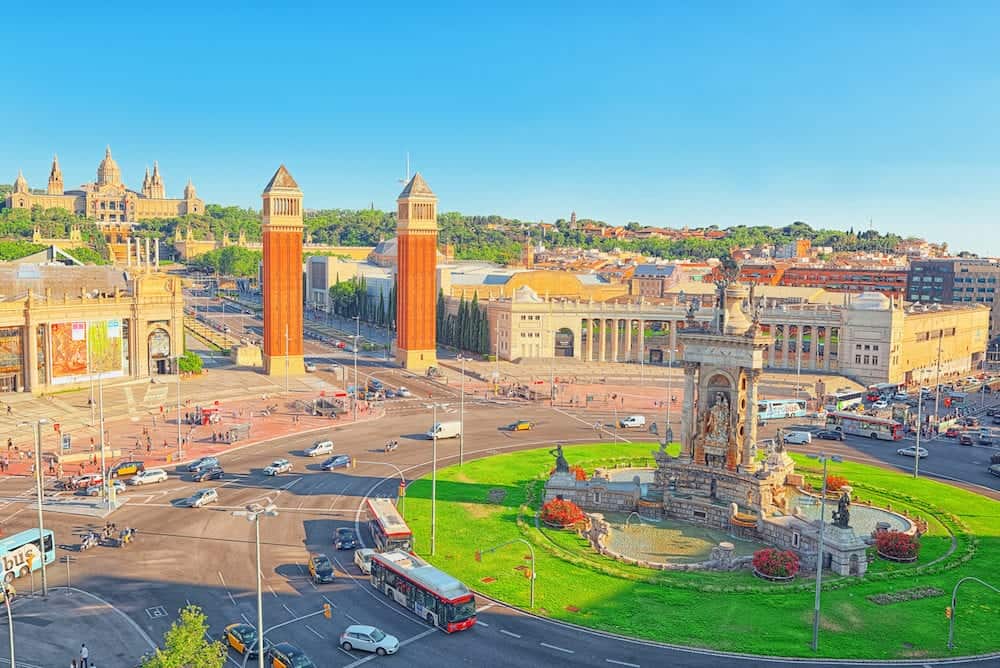
Visit Las Setas or Metropol Parasol
In the city centre you will come across the Metropol Parasol, also known by locals as Las Setas, or the mushrooms. This ultra-modern structure was inspired by the vaults of the Seville Cathedral and also the ficus trees of the Plaza de Cristo de Burgos.
You can visit the top of the structure to see incredible views of the city, underground there is an Aniquarium, Roman and Moorish remains which were uncovered during the construction of the structure. At street level there is a market with some small bars and restaurants.
You can visit the balcony between 10:00 – 23:00 on Sundays to Thursdays, and 10:00 to 23:30 on Fridays and the weekend, it costs only €3 to visit the observatory viewpoint and is well worth it.
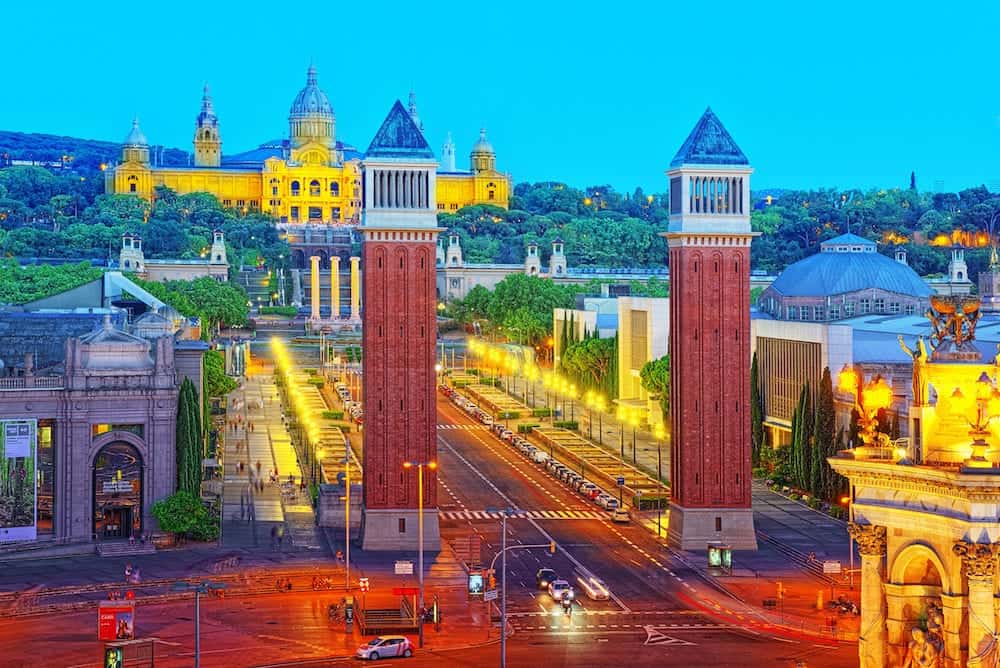
Expo ’92 grounds
Just across the river from the old city is the remnant of the Exposition of Seville, known as Expo ’92.
For an unusual thing to do in Seville, visit the desolate fair ground by bicycle. The theme of the world expo was “The Age of Discovery” and more than 100 nations participated in the event which drew over 40 million visitors to the site.
After the fair, the pavilions were demolished and the structures decayed over time. You can still see the geodesic globe, the shell of a rocket ship built to scale and the towering obelisk of the Tower of Europe. The park has an eery feel and is an attraction for curious travellers.
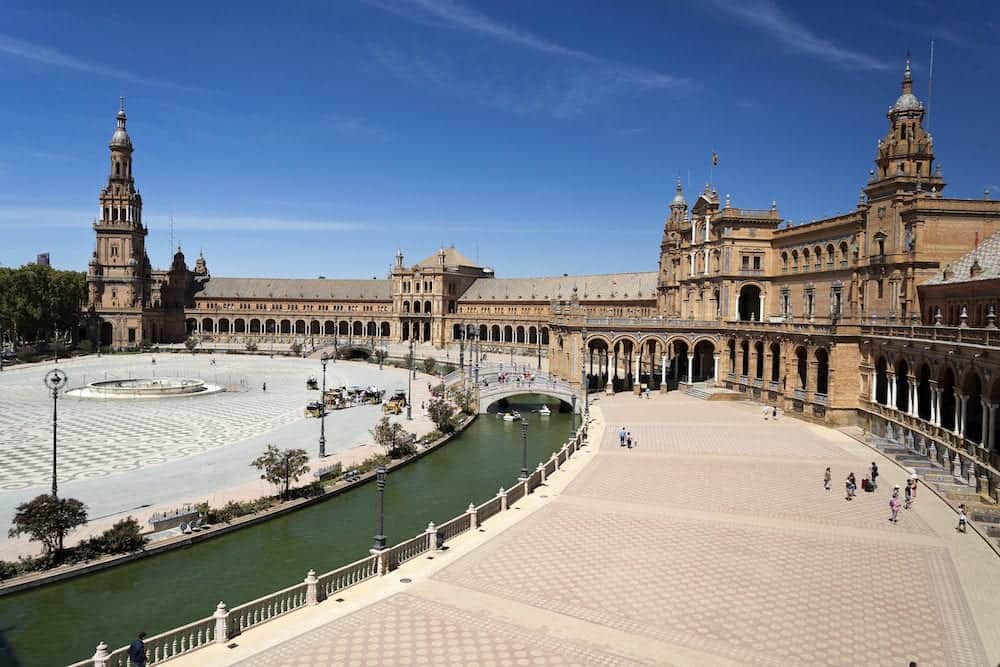
What to eat in Seville
Drink orange infused wine
Seville is the perfect city to go bar hopping, eating tapas and enjoying an ice-cold beer along the way.
You can even savour some of the heady orange infused wine that evokes the fragrance of the orange blossoms.
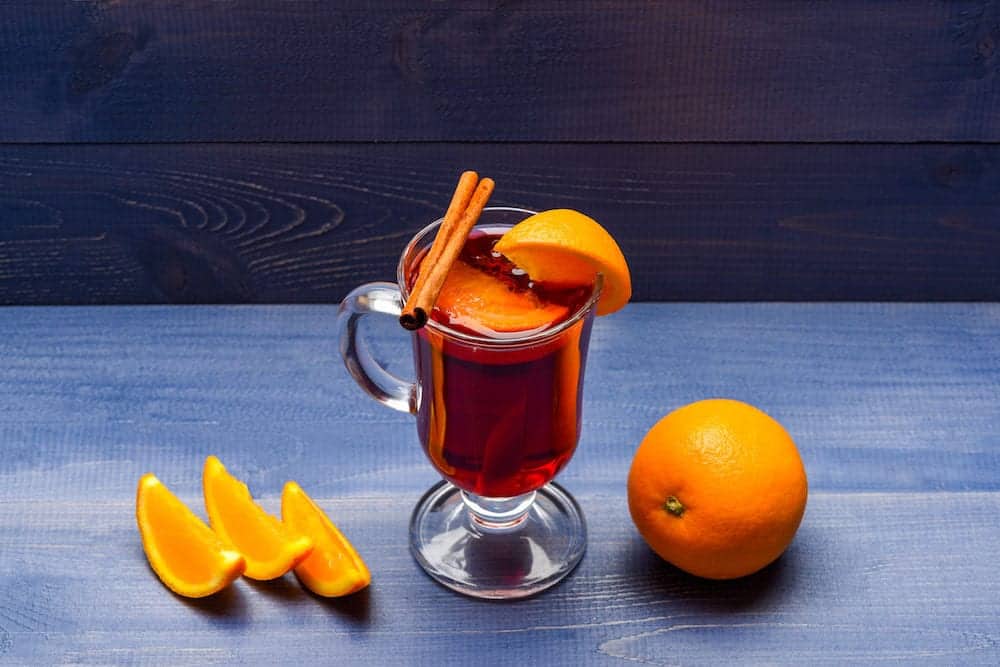
Montadito de Pringa
Beware as the city is full of tourist traps, the most authentic places are historic bars and don’t be fooled into ordering paella or tortilla, the best dishes in Seville include montaditos de pringa
A delicious small sandwich stuffed with meat from cocido (Spanish stew) and mixed with pork fat, the best montadito de pringa can be found at Bodega Santa Cruz Las Columnas (Alameda de Hércules, 19, 41002 Sevilla) and is so delicious you’ll be back for more!
Eat seafood!
Though Seville is not so close to the sea, the seafood is incredible! For some excellent tapas, visit El Patio de San Eloy tapas bar situated in the shopping district of the city, but you MUST go to the original located on Calle San Eloy, 9, 41001 Sevilla.
Here in the hustle and bustle of the busy restaurant, the servers work efficiently behind a narrow bar, shouting orders at one another whilst serving up delicious cooked prawns sprinkled with coarse sea salt, a smoky paprika octopus salad and a variety of delicious Spanish delicacies.
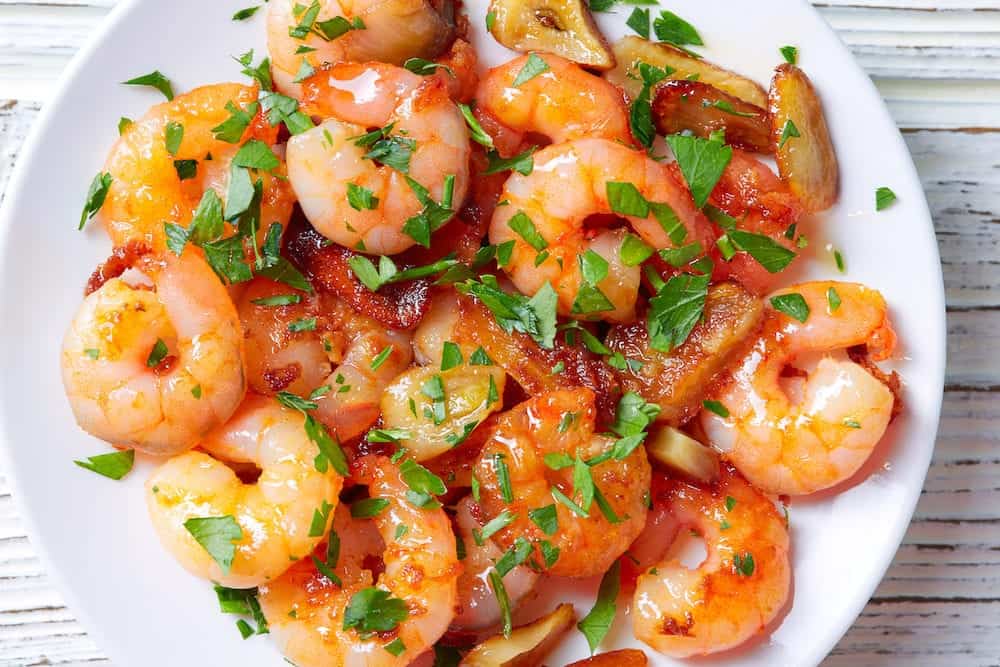
Fried fish, or Pescado Frito, is also popular in Seville and one of the best places to order it is Freiduría Puerta de la Carne, Puerta de la Carne 2, which is a budget friendly fried fish restaurant and don’t leave without trying the adobo fish.
Another favourite is Freiduría Reina Victoria, Calle Rodrigo de Triana 51, in the Triana neighbourhood for authentic and delicious fried fish.
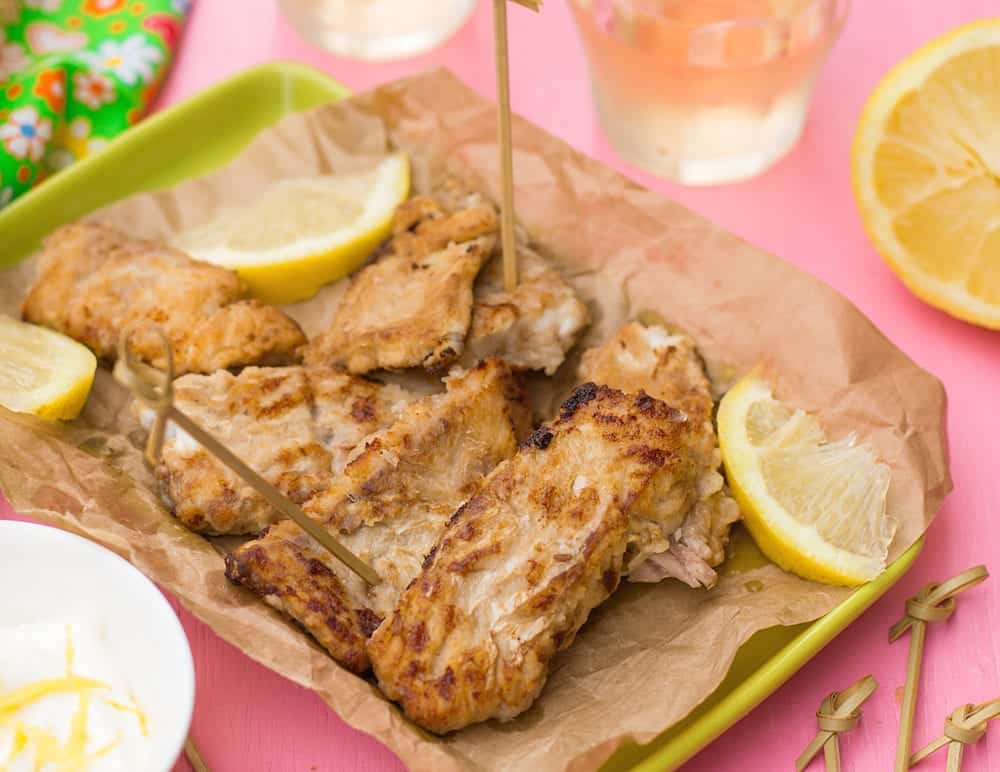
Meat
As you are in Spain, meat is almost always featured on the menu. Due to the popularity of bullfighting, rabo de toro (bull’s tail) is often found on the menu and the soft melt in your mouth stew is a winner.
Here Jamón is a popular tapas dish, most of it coming from the nearby province of Huelva, famed for its Iberian pigs that feast on acorns and chestnuts and provide unbeatable flavor.
You can find Jamón at El Rinconillo, Calle Gerona 40.
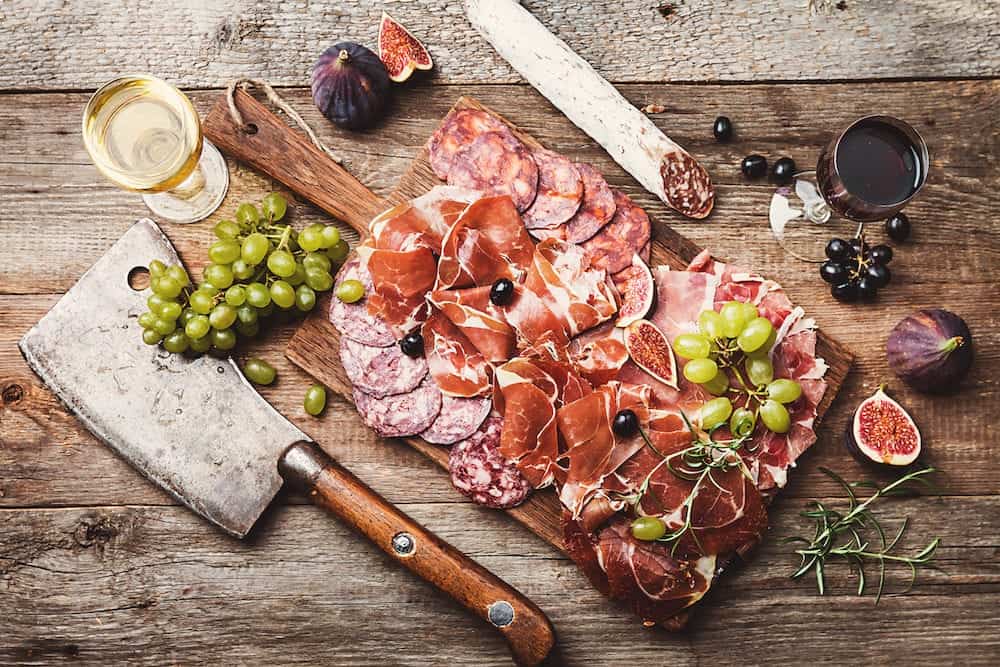
Orange blossom ice cream
British TV Chef Rick Stein raved about orange blossom ice cream at Heladeria La Fiorentina, Calle Zaragoza 6, and he was absolutely right! This little-known gem serves floral orange ice cream that is something any foodie must try whilst in Seville.
You can also try the local dulce de torrijas here, bread soaked in egg, wine, cinnamon and orange which is then fried and coated in honey for an authentic calorific treat.

Olive oil
Though not quite a food, this is one of the staples of Spanish cuisine and olive oil is a product that can be truly appreciated in Seville with one of the award-winning olive oils manufactured by Basilippo, situated just a short distance from Seville and Carmona.
If you want to learn more about olive oil, Basillipo organizes a tour for epicureans including a tasting of their olive oil, which echoes of Spanish summertime with its warm tomato and basil tones.
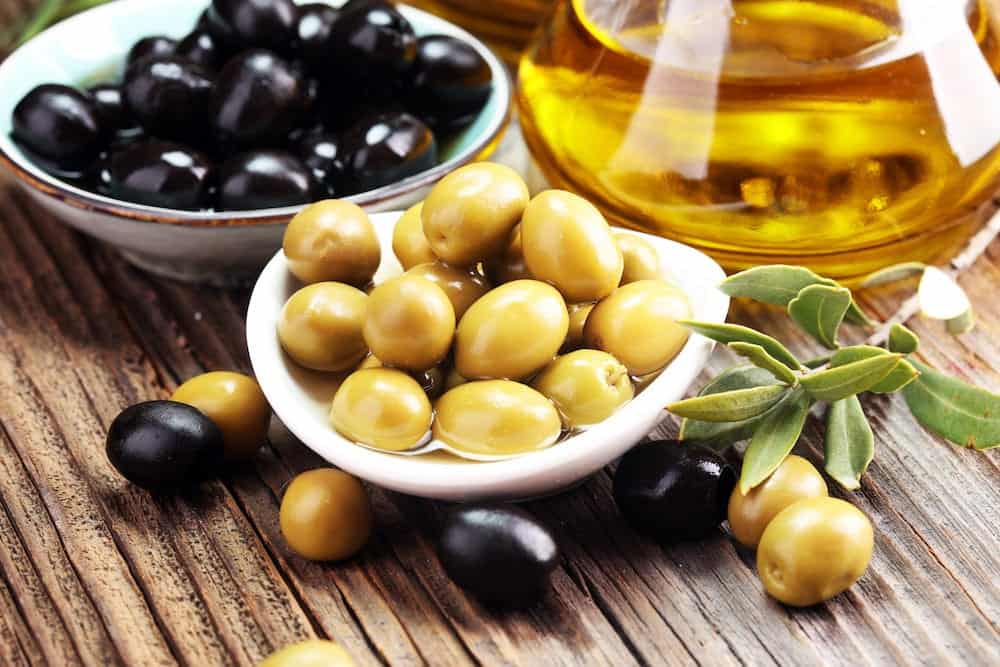
Tours to do in Seville
Free walking tour in Seville
Sandemans offers a free day tour of Seville by foot; just remember to leave a tip at the end for the tour guide!
Tapas tour Seville
Enjoy a stroll around the city and taste the best tapas the city has to offer with this four hour tour for only €49 per person.
Guadalquivir River Boat Trip from Seville
Take a riverboat tour down the Guadalquivir river for only €23 per person!
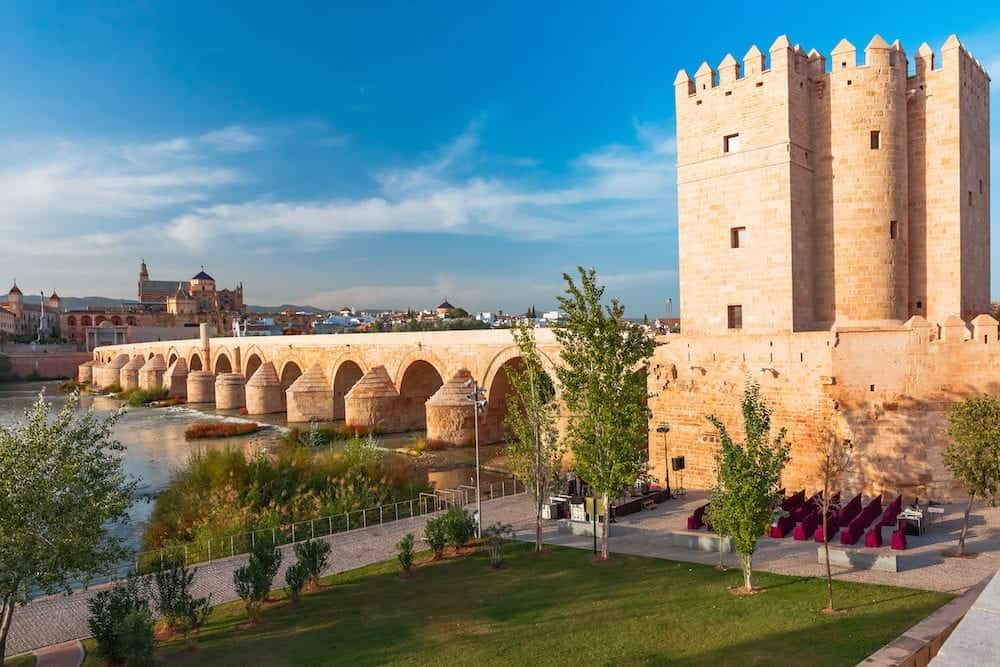
Day trips from Seville
Cordoba
Just 45 minutes by high-speed train from Seville is the city of Cordoba which is the setting of an 8th century Mezquita, a mosque which was later converted to a Catholic cathedral, a charming Alcazar, ruins of Medina Azahara and a winding Jewish quarter.
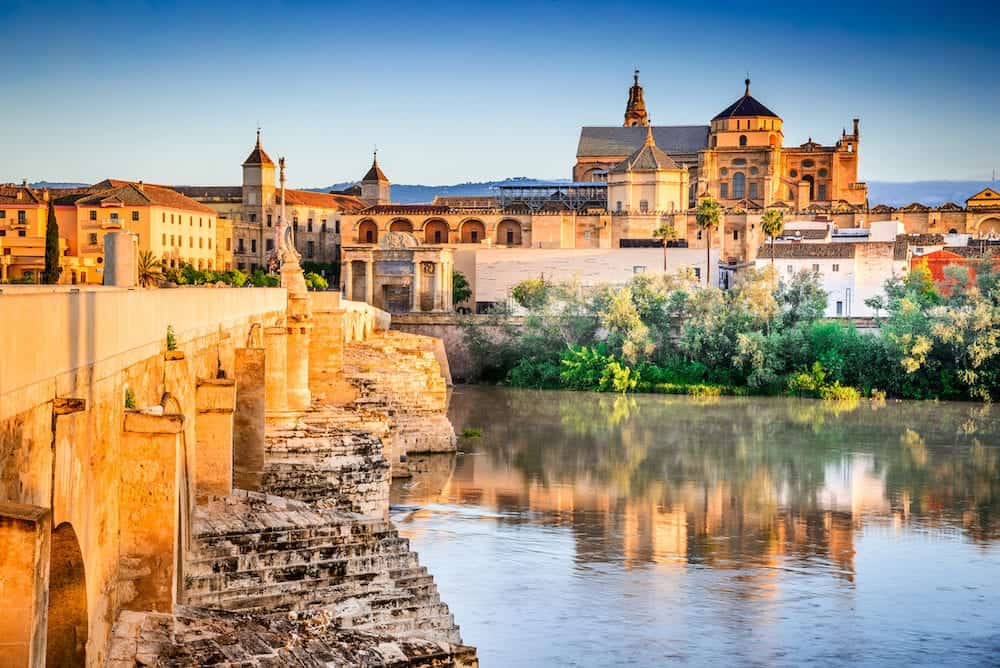
Carmona
A short 30-minute bus ride from Seville is the historic city of Carmona. This beautiful city is made up of cobble streets and palatial homes; there is also an impressive necropolis from the Roman era and excellent tapas!
For the gourmet food lovers you can visit Basilippo, located halfway between Seville and Carmona, to learn about one of the world’s most highly-prized olive oils and enjoy a tasting as well.
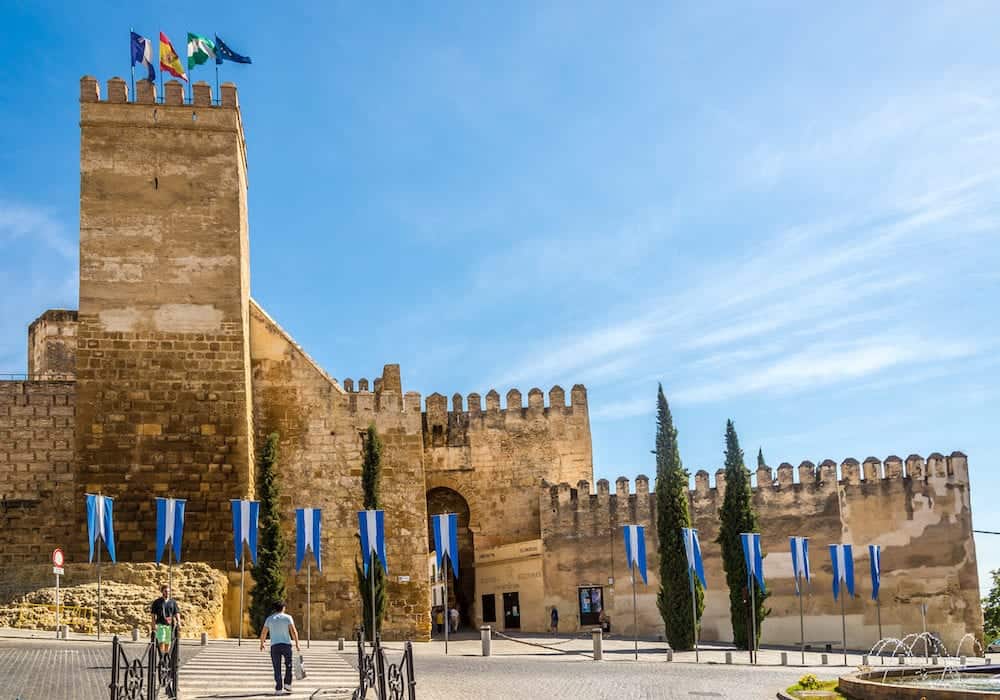
Recommend budget tours in Seville
- Fast-Track Seville Guided Tour into Alcazar
- Tangier Day Trip from Seville
- Flamenco Show at Tablao Flamenco El Arenal in Seville
- Alcázar of Seville Early Access with Optional Cathedral
- Private Monumental Seville Walking Tour
- Seville Hot-Air Balloon Ride
- Cadiz Shore Excursion: Seville Tour and Skip-the-Line at Royal Alcazar Palace
- Santa Cruz Jewish Quarter Guided Tour in Seville
- Triana Gourmet Tapas Tour in Seville
If you’d like to save it for later, please save it to Pinterest.
